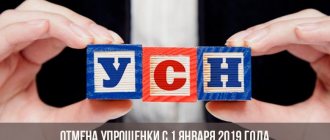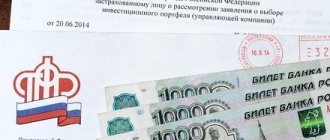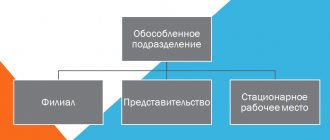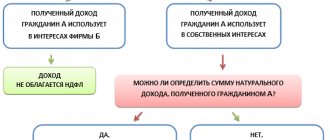Are you switching from UTII? Connect Kontur.Accounting
45% discount in November: RUR 7,590 instead of 13,800 rub. per year of work
Easy bookkeeping
The system itself will calculate taxes and remind you of the deadlines for payments and submission of reports.
Automatic calculation of salaries, vacation pay and sick leave
Technical support 24/7, tips inside the service, reference and legal database
Sending reports via the Internet
Reports and KUDiR are generated automatically based on accounting data
Electronic document management and quick verification of counterparties
Documents, transactions, analytical reports, VAT reconciliation
How can an entrepreneur combining UTII and simplified tax system take into account - personal - insurance premiums (Barkovets V
With this option, the businessman has the right to take into account only the part of the fixed payment that falls on activities under the simplified tax system. To determine which part should be attributed to UTII and which to the simplified tax system, you need to keep separate records of income and expenses (clause 8 of article 346. 18 of the Tax Code of the Russian Federation). And divide the contributions in proportion to the income received.
For example, for 9 months of 2014, you earned 2 million rubles using simplified currency. , and on UTII - 1 million rubles. This means that 2/3 of the insurance premiums paid for this period can be taken into account under the simplified tax system, and 1/3 - under UTII. Please note: the tax period under the simplified tax system is a calendar year and revenue for calculating the “simplified” tax is considered a cumulative total from the beginning of the year. And with UTII, the tax period is a quarter. What kind of revenue to take - calculated on an accrual basis from the beginning of the year or only for the quarter - you decide for yourself.
The main thing is to register your choice in the accounting policy. If an entrepreneur works alone, he can reduce the tax both under the simplified tax system and under UTII by the entire amount of insurance premiums paid for himself (clause 3. 1 of article 346. 21, paragraphs.
7 clause 1 art. 346. 16 and paragraphs. 1 item 2 art. 346. 32 Tax Code of the Russian Federation). At the same time, he can choose what is more profitable for him to do: either distribute the amount of the fixed contribution in proportion to the income received from types of activities related to a certain special regime (clause 7 of Article 346. 26 of the Tax Code of the Russian Federation), or take into account the entire amount of the fixed payment within one special regime (USN or UTII). The fact that an entrepreneur working alone may not divide contributions between special regimes, but take them entirely into account according to one of them, is directly stated in the Letter of the Ministry of Finance of Russia dated May 26, 2014 N 03-11-11/24975. ——————————— The tax base under the simplified tax system can be reduced by insurance premiums in the period in which they were paid. The tax period according to the simplified tax system is the calendar year, the reporting periods are the first quarter, half a year and 9 months (clause 2 of article 346. 17, clauses 1 and 2 of art.
346. 19 Tax Code of the Russian Federation). The UTII must be reduced in the quarter in which contributions are paid. If the “imputed” tax turns out to be less than the amount of contributions paid, then the balance of the deduction is not carried forward to the next quarter (as is possible under the simplified tax system), since the tax period for UTII is a quarter (Article 346. 30 of the Tax Code of the Russian Federation). Example 2. Distribution of contributions between UTII and simplified tax system in proportion to income. Entrepreneur S. V. Korablev applies the simplified tax system with the object “income minus expenses” and UTII. It has employees involved in each of its activities. The businessman divides the paid personal contributions between special regimes in proportion to the income received, calculated within each quarter; this is stated in his accounting policy. For the third quarter of 2014, the share of income from activities taxed under the simplified tax system amounted to 67%, from “imputed” activities - 33%. S.V. Korablev pays 1/4 of the annual insurance premiums every quarter - 5181.88 rubles. [(17,328.48 rub. + 3,399.05 rub.) : 4]. He paid the corresponding amount in September. This means that S.V. Korablev will be able to take into account the fixed payment for 9 months of 2014 in the amount of 3471.86 rubles in expenses during the “simplification”. (5181, 88 rub. x 67%).
But the second part of the fixed payment in the amount of 1710.023 rubles. (5181.88 rub. x 33%) he will not be able to reduce it by UTII. Because he has employees.
Application of reduced tariffs when combining modes
The law allows for combining a simplified taxation system and a special regime in the form of UTII. However, it was possible to pay insurance premiums when combining UTII and simplified tax system at reduced rates only in the period from 2021 to 2021. In 2021, the benefit ceased to apply. Now businessmen pay contributions at the generally established rate. Previously, the total share of insurance premiums of persons on the simplified tax system listed in Art. 427 of the Tax Code of the Russian Federation, and having revenue of no more than 79 million rubles per year, was 20%, now increased to 30%.
The following tariffs apply in 2021:
- in the Pension Fund of Russia - 22%;
- in the Social Insurance Fund - 2.9%;
- in the Federal Compulsory Medical Insurance Fund - 5.1%.
Reduced tariffs in the amount of 20% of contributions to the Pension Fund and 0% each to the Social Insurance Fund and the Federal Compulsory Medical Insurance Fund until 2025 can be applied by non-profit organizations that conduct socially significant activities in the field of public services, science, healthcare, sports, education and charity.
It is not possible to combine the simplified tax system and UTII in 2021. From January 1, imputation will be cancelled. Choose a new tax system using our online calculator: enter your parameters to find the most profitable regime. We answered the most popular questions about the cancellation of UTII and insurance premiums in the article. If you don’t find the answer, ask your question in the comments, we will definitely answer.
When should the application of UTII be completed if the goods include those that are subject to mandatory labeling?
As already mentioned, in 2021 it is prohibited to trade marked goods and apply UTII. It is important to indicate the dates from which this requirement applies:
- fur products – termination of UTII from January 1, 2020 ;
- medicines and footwear – termination of UTII from July 1, 2020 .
As you know, you can switch to the simplified tax system only from the beginning of the calendar year (Article 346.13 of the Tax Code of the Russian Federation). But how does this condition work during the transition from UTII to the simplified tax system with the participation of goods that fall under the label? What about the combination of simplified taxation system and UTII in trade, both retail and non-retail? We will answer these questions further.
Insurance premiums for individual entrepreneurs
Individual entrepreneurs pay insurance premiums for themselves and for their employees. Entrepreneurs pay contributions for themselves in a fixed amount only to the Pension Fund and the Federal Compulsory Compulsory Medical Insurance Fund. You can pay contributions to the Social Insurance Fund voluntarily, but you need to keep in mind that they will not reduce taxes.
The Federal Tax Service has determined the amount of individual entrepreneur deductions for itself; it is no longer related to the minimum wage. In 2021, the amount of payment to the Compulsory Medical Insurance Fund is 8,426 rubles. In the Pension Fund - 32,448 rubles, if your income is no more than 300,000 rubles. If the income is higher, then you must pay to the Pension Fund a fixed part of 32,448 rubles and 1% of the excess amount, but not more than 259,584 rubles (32,448 rubles eight times the amount). You can calculate contributions for a partial year using our free online calculator.
For his employees, an entrepreneur, like any organization, must make payments to the Pension Fund, the Federal Compulsory Medical Insurance Fund, and the Social Insurance Fund.
How can individual entrepreneurs take into account insurance premiums when combining tax regimes in 1C: Accounting 8?
When applying a simplified taxation system with the object “Income (“STS Income”), the calculated amount of tax (advance payment) can be reduced by the amount of expenses provided for in paragraph 3.1 of Article 346.21 of the Tax Code of the Russian Federation. These expenses include insurance premiums paid in the current tax (reporting) period, temporary disability benefits at the expense of the employer, payments (contributions) under voluntary personal insurance contracts. In the information register Accounting Policy (section Main), it is necessary to indicate the taxation system used by IP Belkin A.A. - UTII.
To store in the accounting system information about types of activities subject to a single tax on imputed income, starting from version 3. 0. 43. 162, the Types of Activities directory is intended. The directory is accessed from the Accounting Policy register form using the corresponding link on the UTII tab. You can also specify information about the types of UTII activities in the UTII reporting assistant by clicking the Add type of activity button.
- income according to tax accounting data - when applying the basic or simplified taxation system;
- imputed income from activities subject to UTII - according to the directory Types of UTII activities (values of the physical indicator, adjustment coefficient and tax rate);
- potential income from received patents based on the validity period of the patents and the amount of potential annual income.
- cannot reduce UTII by the amount of insurance premiums paid for oneself in a fixed amount;
- has the right to reduce the amount of tax paid in connection with the application of the simplified tax system for income by the amount of contributions for compulsory pension and health insurance specified in paragraph 3.1 of Article 346.21 of the Tax Code of the Russian Federation and paid both for employees and for oneself, at the same time , but not more than 50 percent.
The calculation of salaries, sick leave and vacations in the program is carried out using documents of the same name, available via the hyperlink All accruals from the Salaries and Personnel section. The same documents are used to calculate insurance premiums accrued for remunerations and payments to employees. After posting the document, accounting entries are generated, and entries are also entered in the accumulation registers of the salary accounting subsystem and the simplified tax system subsystem.
Both in accounting entries and in accumulation registers, labor costs and insurance premiums are distributed by type of activity (“STS income and UTII) according to pre-made settings.
- name and code of the type of activity (selected from the Classifier of types of entrepreneurial activities);
- address of the place of activity;
- date of registration and deregistration;
- The collapsible group Tax Inspectorate stores information about the tax authority with which the organization is registered as a UTII taxpayer. If the user has a 1C:ITS contract and Internet support is connected, then after entering the address of the place of business, information about the inspection (including payment details) is filled in automatically;
- in the Tax calculation group, you can estimate the amount of tax for the quarter based on the current value of the physical indicator, and also view the history of changes in physical indicators, the adjustment coefficient and the tax rate.
Distribute “insurance” expenses
If you conduct several types of activities and combine simplification and imputation, then accounting for income and expenses must be kept separately according to special modes. This also applies to insurance costs. Distribute insurance payments by type of activity: part of them will be taken into account when calculating the single simplified tax, and the other - when calculating the imputed tax.
Distribute contributions for employees depending on the type of activity in which they are employed. If the employee is involved in two at once, it is necessary to divide payments in proportion to the income received for each type of activity. The same applies to all expenses that cannot be distributed. To compare income from simplification and imputation, you need to consider them for the entire year as a cumulative total. In addition to contributions for employees, individual entrepreneurs also distribute their own contributions.
Income accounting for expenses distribution
Situation: how to determine income when drawing up proportions for the distribution of general business expenses: accrual method or cash method? The organization combines simplified taxation and UTII
Organizations combining simplified taxation and UTII must:
- keep separate records of income and expenses for each of these special regimes. Expenses that cannot be attributed to activities within the framework of a particular tax regime must be distributed in proportion to the share of income from each type of activity in the total income (clause 8 of article 346.18, clause 7 of article 346.26 of the Tax Code of the Russian Federation);
- maintain accounting (Article 2, 6 of the Law of December 6, 2011 No. 402-FZ);
- keep a book of income and expenses for operations that relate to simplified activities (Article 346.24 of the Tax Code of the Russian Federation).
The procedure for determining the total amount of income for the distribution of general business (general production) expenses between different types of activities is not established by law. In letters of the Ministry of Finance of Russia dated April 28, 2010 No. 03-11-11/121, dated November 23, 2009 No. 03-11-06/3/271 and dated November 17, 2008 No. 03-11-02/130 it is said that income from activities transferred to UTII should be determined according to accounting data, but taking into account two additional features.
Firstly, you need to be guided by the provisions of Articles 249, 250 and 251 of the Tax Code of the Russian Federation. That is, in the calculation of the proportion it is necessary to include not only sales revenue, but also non-operating income. At the same time, income that does not increase the tax base for income tax is not taken into account in the amount of income from activities on UTII.
Secondly, income from activities on UTII must be determined as payment is made. That is, to calculate the proportion from income reflected in accounting on an accrual basis, the accountant must exclude all unpaid income.
Situation: how to determine the total amount of income when combining simplified taxation and UTII - accrual method or cash method? The total amount of income is necessary to correctly allocate deductions (sickness benefits and insurance premiums) to employees engaged in both types of activities. When simplified, the organization pays a single tax on income
The procedure for determining the total amount of income for the distribution of deductions between different types of activities when combining special tax regimes is not established by law.
The amount of UTII accrued for the quarter can be reduced:
- on the amount of insurance premiums actually paid (within the accrued amounts) in the quarter for which the single tax was assessed;
- the amount of contributions under voluntary personal insurance contracts concluded in favor of employees in the event of their temporary disability (subject to certain conditions being met);
- for the amount of hospital benefits paid at the expense of the organization for the first three days of incapacity for work in the part not covered by insurance payments under voluntary insurance contracts.
This procedure is provided for in paragraph 2 of Article 346.32 of the Tax Code of the Russian Federation.
The amount of the single tax (advance payment) during simplification can be reduced by the amount:
- insurance premiums actually paid (within the accrued amounts) in the quarter for which the single tax was accrued (advance payment);
- contributions under voluntary personal insurance contracts concluded in favor of employees in the event of their temporary disability (subject to certain conditions);
- paid at the expense of the organization's hospital benefits for the first three days of incapacity for work in the part not covered by insurance payments under voluntary insurance contracts.
This is stated in paragraph 3.1 of Article 346.21 of the Tax Code of the Russian Federation.
At the same time, the total amount of deduction both for UTII and for the single tax under simplification cannot exceed 50 percent of the amount of the accrued tax (advance payment for the single tax under simplification) (clause 2.1 of article 346.32, clause 3.1 of article 346.21 of the Tax Code of the Russian Federation ).
To calculate deductions for insurance premiums and sick leave benefits accrued to employees who are simultaneously engaged in both types of activities, these amounts must be distributed. Insurance premiums and sick leave benefits should be distributed in proportion to the share of income from each type of activity in the total income of the organization (clause 8 of article 346.18, clause 7 of article 346.26 of the Tax Code of the Russian Federation).
Similar clarifications are contained in the letter of the Ministry of Finance of Russia dated October 20, 2011 No. 03-11-06/2/143.
An example of determining the amount of tax deductions for UTII and single tax with simplification. Sick leave benefits and insurance premiums accrued from the income of an employee simultaneously employed in both types of activities are eligible for deduction. When simplified, the organization pays a single tax on income
Alpha LLC combines simplified taxation (the object of taxation is income) and UTII. Alpha’s accounting policy for tax purposes states that the amounts of tax deductions are distributed in proportion to the share of income from each type of activity in total income. At the same time, income from activities on UTII is determined according to accounting data (only paid income is accepted), income from activities on a simplified basis - according to the book of income and expenses.
The organization has one employee engaged in both types of activities simultaneously. In March, at the expense of its own funds, the organization paid this employee a sick leave benefit in the amount of 10,000 rubles, and also transferred for him contributions to compulsory pension (social, medical) insurance and contributions to insurance against accidents and occupational diseases in a total amount of 30,000 rubles.
For March, Alpha's income amounted to:
- from activities on UTII - 1,100,000 rubles, including unpaid income - 100,000 rubles;
- from simplified activities - 2,000,000 rubles.
To determine the amount of deductions, the accountant calculated the share of income from each type of activity in the total income of the organization.
The share of income from activities on UTII was: (1,100,000 rubles – 100,000 rubles): (1,100,000 rubles – 100,000 rubles + 2,000,000 rubles) = 0.33.
The accountant calculated the amount of deduction for UTII as follows: (10,000 rubles + 30,000 rubles) × 0.33 = 13,200 rubles.
The total amount of UTII accrued for the first quarter was 20,000 rubles. 50 percent of this amount is 10,000 rubles. (RUB 20,000 × 50%). Since the amount of deduction calculated based on the proportion exceeds 50 percent of the tax amount, the amount of UTII can only be reduced by 10,000 rubles.
The amount of deduction for the single tax under simplification was: 40,000 rubles. – 13,200 rub. = 26,800 rub.
The amount of the advance payment for the single tax under simplification for the first quarter amounted to 120,000 rubles. (2,000,000 × 6%). 50 percent of the advance payment amount – 60,000 rubles. (RUB 120,000 × 50%). Since the amount of the deduction calculated based on the proportion does not exceed 50 percent of the amount of the advance tax payment, the accountant reduced the amount of the advance payment by 26,800 rubles.
Tax reduction for individual entrepreneurs without employees
An individual entrepreneur can reduce taxes by the amount of insurance contributions - these are his fixed contributions. An entrepreneur can reduce the tax under the simplified tax system by deduction, reduce the imputed tax, or distribute insurance premiums between UTII and the simplified tax system.
Please note: a simplified individual entrepreneur with the “income” object reduces the tax on contributions, and with the “income minus expenses” object, insurance contributions reduce the tax base. Taxes can be reduced down to zero, but only in the quarter in which contributions are paid. Therefore, pay your insurance premiums quarterly.
How to keep separate accounting of expenses when combining the simplified tax system with a patent
If you combine the simplified tax system “Income minus expenses” with a patent, it is important to correctly distribute expenses. Expenses are taken into account according to the taxation system to which they belong. Sometimes there are complex situations when consumption cannot be attributed to only one of the systems. A common example is office rent.
Consider this expense in proportion to the income for each system. If you receive the same income, then you can take into account only half of the total expenses in the simplified tax system.
Some of Andrey’s expenses relate to both the patent and the simplified tax system - rent of premises and employee salaries. Monthly income from a cafe is 300,000 rubles, and from wholesale trade is 150,000 rubles. Total expenses for the month are 100,000 rubles. The simplified tax system can only take into account 33,333 rubles = 100,000 rubles x (150,000 rubles/450,000 rubles).
During the audit, the tax office may request documents confirming the maintenance of separate accounting. This way she will make sure that you have not inflated your expenses and paid the tax correctly.
For separate accounting, you can create a separate book. The law does not establish its form, so you can develop one that is convenient for you. Record income and expenses for each system, as well as general expenses. And at the end of the month, summarize and distribute total expenses across different systems.
Tax reductions for the “profitable” simplified tax system and UTII with employees
Organizations and individual entrepreneurs with employees can reduce the amount of imputed and simplified taxes by half due to insurance premiums paid for themselves and for employees. However, when combining UTII and simplified tax system “income”, some features arise:
- If employees are engaged only in imputed activities. In this case, due to the contributions paid for all employees, the imputed tax can be reduced by 50%. The simplified tax system is reduced without restrictions due to contributions paid for individual entrepreneurs.
- If employees are engaged only in simplified activities. Then you can reduce the tax under the simplified tax system by up to half due to contributions for employees. In this case, UTII can be reduced by individual entrepreneurs’ contributions for themselves.
- If employees participate in all types of activities. Then both the imputed and simplified tax can be reduced by half according to the limitation. The simplified tax system is based on contributions paid for employees and individual entrepreneurs. UTII - from contributions paid for employees. The amount of contributions paid for employees is divided taking into account the distribution of employees according to the applicable regimes, and if this is not possible, in proportion to income.
Employees are questionable
In practice, it is often unclear how to keep separate records of insurance premiums if employees cannot be divided by type of activity. Then one of three methods is used.
- The essence of the first method is that the amounts of insurance premiums are distributed proportionally according to the available share of income received by the company under the UTII or simplified tax system. When calculating UTII and simplified tax system, “income contributions must be distributed similarly to general expenses.
- The second method is based on the distribution of contributions in proportion to the received revenue parameter. The distribution in this situation should be monthly.
- The third method is based on distribution, which is rare today, in proportion to the specific gravity of payments. That is, income paid to employees is distributed in proportion to the revenue received from a specific activity relative to the total within the two regimes.
If you find an error, please select a piece of text and press Ctrl+Enter.
Accounting for insurance contributions under the simplified tax system “income minus expenses” and UTII with employees
In this case, the amount of imputed tax can also be reduced to 50% by the amount of deductions for employees. As for simplification, it is not the amount of tax that is reduced, but insurance contributions that are taken into account as expenses.
- If employees are employed everywhere, then the costs of insuring themselves and employees fall into the expenses of the simplified tax system in full, in proportion to the amount of income received. UTII is reduced according to the half-limit of contributions paid for part of the employees and in a fixed amount in proportion to income. Distribute contributions wisely.
- If employees participate only in activities subject to imputed tax, it can also be halved through contributions for employees, and income under the simplified tax system is reduced by the entire amount of fixed payments for individual entrepreneurs.
- When employees are employed only in simplified activities, take into account all payments for employees and for yourself related to this activity as part of the expenses under the simplified tax system. You can reduce UTII only by fixed contributions for yourself.
Author of the article: Lyubov Evgrafova
If you combine modes, work in the Kontur.Accounting web service. The system itself will calculate taxes and help distribute contributions, and draw up reports based on accounting. Simple accounting, salary, reporting via the Internet and advice from our experts. Use the service for free for the first 14 days.
The Federal Tax Service explained how to take into account a fixed payment when combining the simplified tax system and the UTII - all about taxes
- Mandatory insurance contributions accrued for the same period on employees' wages and paid in the same tax period;
- Temporary disability benefits paid to employees for the first three days of illness;
- Contributions under voluntary insurance contracts paid to employees for the first three days of illness, if the total amount of payments does not exceed the established amount of temporary disability benefits.
For example, it has been established that cash payments in the currency of the Russian Federation (subject to the maximum amount) between participants in cash payments and individuals for transactions with securities, under real estate lease agreements , for the issuance (repayment) of loans (interest on loans), activities related to the organization and conduct of gambling are carried out at the expense of cash received at the cash desk of the participant in cash payments from his bank account .
- The individual entrepreneur operates in the place where he was registered as an entrepreneur - he pays fixed payments for himself to his tax office.
- If an individual entrepreneur is registered in one tax office, but does not operate in his own area and submits reports to another tax office, in this case, the individual entrepreneur pays fixed payments for himself to the tax office where he was registered as an individual entrepreneur.
- If an individual entrepreneur has employees and also operates outside of his area, then payments for himself are paid at the place of registration. In this case, payments for employees are paid to the tax office at the place of registration of the entrepreneur, regardless of the applied tax regime. This clarification is indicated in the letter of the Federal Tax Service No. BS-4-11/3748 dated 01.03.17.
- Keep records of all business transactions and property for each special regime separately. The law places particular emphasis on the need to differentiate between income and expenses.
- To consolidate the accepted method of distinguishing income and expenses in accounting policies. It is recommended to clearly justify the organization of separate accounting. You should also indicate which special regime specific operations belong to.
- Comply with the restrictions provided for simplification and imputation. In particular: the number of hired employees is no more than 100 people;
- owners who are organizations own no more than 25% of the capital;
- the cost of fixed assets is no more than 150 million rubles. ;
- For simplification, income restrictions are provided: they cannot exceed 150 million rubles. during the reporting (tax) period. Also, a simplifier cannot have branches;
- for UTII for some types of activities there is a specific condition regarding the area of premises: for example, the area of a sales area or catering premises should not exceed 150 square meters. m.









